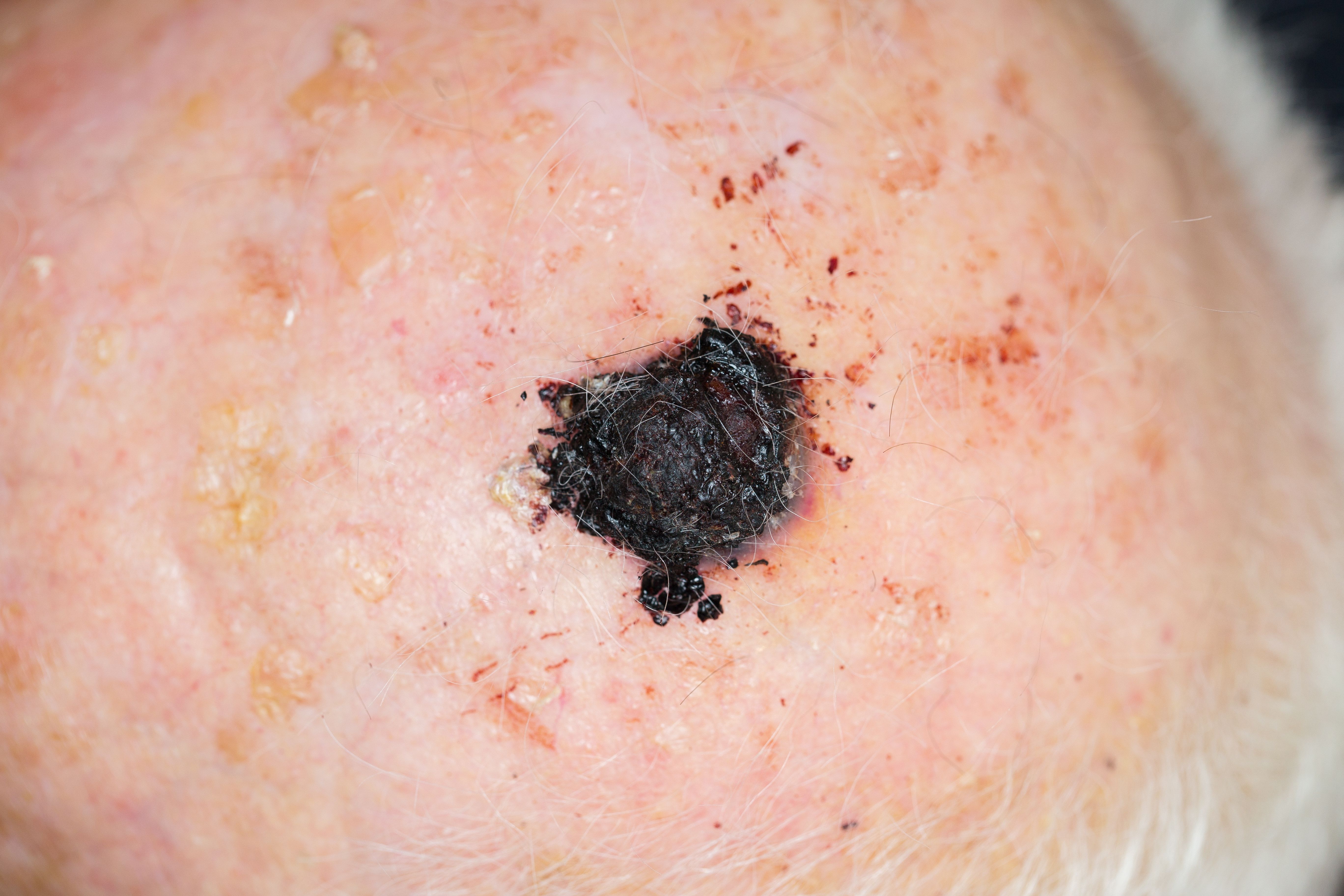- Acne
- Actinic Keratosis
- Aesthetics
- Alopecia
- Atopic Dermatitis
- Buy-and-Bill
- COVID-19
- Case-Based Roundtable
- Chronic Hand Eczema
- Chronic Spontaneous Urticaria
- Drug Watch
- Eczema
- General Dermatology
- Hidradenitis Suppurativa
- Melasma
- NP and PA
- Pediatric Dermatology
- Pigmentary Disorders
- Practice Management
- Precision Medicine and Biologics
- Prurigo Nodularis
- Psoriasis
- Psoriatic Arthritis
- Rare Disease
- Rosacea
- Skin Cancer
- Vitiligo
- Wound Care
News
Article
Higher Treatment, Health Care Costs Associated With Advanced Melanomas
Author(s):
Greater treatment costs are associated with more advanced stages of melanoma, particularly due to increasing prices of treatments.
lavizzara/Adobe Stock

Higher health care costs were found to affect patients with stages 2 to 4 melanoma, according to a recent study.1
Specifically, the study from JAMA Network determined that there was an increase in mean per-person health care costs over time, which was mainly because of the expensive treatments, including immunotherapies and targeted systemic therapies, for patients with advanced and metastatic melanoma in Ontario, Canada.
“Melanoma is a kind of cancer that you can develop on your skin. It is typically associated with sun exposure, sunburns or other forms of (ultraviolet) exposure, such as historic use of tanning beds in earlier days of life, and results in a cancer that that grows on the skin that's often pigmented or colored — often a dark color — and can occur almost anywhere in the body,” said Timothy Hanna, MD, PhD, during an interview with CURE®. “It's a cancer that is typically treated with surgery, but also in in some cases with radiation, and sometimes for people with more advanced stages of disease with drug therapy.”
Hanna is a radiation oncologist and health services researcher at Queen’s University in Kingston, Ontario, Canada, who specializes in skin cancer treatments, and co-authored the recent JAMA Network study.
The study included two groups of patients with melanoma: 2,346 patients with stages 1 to 4 melanoma in the “past” (from 2007 to 2012) group and 786 patients with stages 2 to 4 melanoma in the “modern-day” group (from 2018 to 2019). Researchers from the study analyzed how health care costs differed among the two groups over time, establishing that patients in the modern-day group obtained higher costs, compared with the patients in the past group.
It was also noted in the study that the stage of disease played a role in the difference in health care costs, as patients in the modern-day group with stages 2 to 4 melanoma had increased costs.
“We found that whether we looked at people that were treated for melanoma in the past (2007 to 2012), before expensive new drugs came in, or whether they were treated in more modern days (2018 to 2019) when we have new and more effective drug therapies, that costs went up as stage went up,” Hanna explained.
“And the reason for that is multifactorial, but a lot has to do with the more extensive therapies that are required as stage increases. So as stage increases, you are more likely to require more complex surgery. It might require an admission to hospital as part of that surgery,” he added. “You might need radiation, which comes with costs, but also you might need drug therapy and (it) can be very expensive and those with more advanced stages of melanoma, particularly stage 3 and stage 4, are often treated now with drug therapy, so that can really add to the cost.”
Reasons for an increase in mean per-person costs over time relate to the complex care that patients receive more recently, Hanna said, especially because of rising costs of drug therapies. He noted that in the past — specifically between 2007 to 2012 —the average cost of melanoma treatment was around $10,000 in Canadian dollars, whereas the average cost in modern times (2018 to 2019) is around $80,000 in Canadian dollars, with the newer drugs.
“The other thing to bear in mind is that we were looking at costs, just from the health care system payer perspective,” Hanna said. “So, this excludes costs such as out of pocket costs for driving to the cancer center, or to doctor visits, or to arranging for care of loved ones, older or younger, that might be part of the family and in the care circle. So there are a lot of other costs that aren't even factored into this.”
Reference
- Bateni SB, Nguyen P, Eskander A, et al. Changes in health care costs, survival, and time toxicity in the era of immunotherapy and targeted systemic therapy for melanoma. JAMA Dermatol. Published online September 6, 2023. doi:10.1001/jamadermatol.2023.3179
[This article was originally published by our sister publication, CURE.]
Newsletter
Like what you’re reading? Subscribe to Dermatology Times for weekly updates on therapies, innovations, and real-world practice tips.















